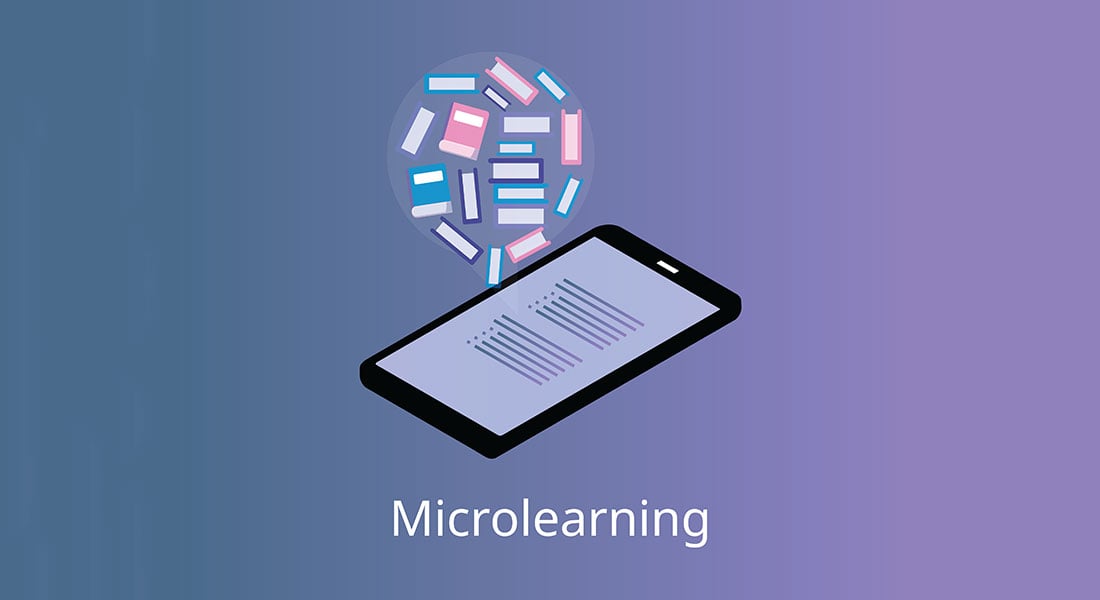Small Things in Big Packages: Why Microlearning Should Be Integral to Your Digital Learning Strategy
This blog explores the reasons for including microlearning in your digital learning strategy for maximum effect. The blog also highlights how microlearning can benefit learners.

The corporate world has undergone a shift toward automation in the recent years. This has led to a transformation of business, and the subsequent obsolescence of skills has led to an urgent need to train employees. The natural choice is to deliver it in the digital format to help businesses and employees learn at their convenience. The main reason of using digital learning is to bring learning to where employees are. This is also known as real time learning. This means providing information to the learner, right at the time he needs it and where he needs it.
Microlearning is the right choice to meet this objective. This access is mostly outside the classroom, which is what digital learning is actually about. Let us see how microlearning can aptly fit in your digital learning context.
1. Meets the needs of learners
Microlearning as we know, consists of short learning modules of not more than 5 to 10 minutes. The information is presented in small, self-contained units which can be accessed on mobile devices that can be accessed anytime and anywhere. These modules can be adapted to the workplace context and the needs of the user.
Microlearning content can be designed to solve a particular problem, help in operational excellence, and provide learning at the point of need. Since learners can access these modules at their convenience, it enables self-paced learning. It can be designed to be understood by multiple classes of workers, and that too in a short time.
Small modules delivered on digital devices can help to quickly fill skill and knowledge gaps. It is easier to update these modules because of their small size and deliver the latest information to employees.
2. Meets digital learning needs
The features of microlearning are in tandem with what digital learning aims for – it can be delivered on mobile devices and accessed by learners at their convenience. It helps them use their time sensibly with short activities. These modules help avoid information overload and promote learning by providing information in a step-by-step manner.
As for real time learning, microlearning provides nuggets of information to learners when they need it. This is especially useful when learners have to be trained on company software or processes. When they are presented in the form of microlearning, employees can refer to them as many times as they want to until they get it right.
Microlearning modules are ideal for performance support because these short modules are designed to contain a single learning point or a solution to a problem and can be accessed on mobile devices. This enables learners to access relevant information to solve a problem or find an answer or access tips to perform a task.
3. Meets present day learning needs
While digital learning itself is suited to meet the needs of today’s generation of learners, microlearning aptly fits in with the way they access information. They search for information in news snippets, exchanges on social media, or by sharing posts. This generation does not appreciate being presented with large amounts of information. They prefer microlearning nuggets that are easy to comprehend and can be accessed on their mobile devices.
For training managers, using short, informative learning bytes will help them to achieve results such as better comprehension, lesser training time, better flexibility and greater return on investment.
4. Aids learning
Microlearning can help with cognitive learning by reducing unnecessary text and providing only focused and specific content that is relevant to the learner. If information has to be retained, it has to be reviewed intermittently. Microlearning makes this possible because these small learning modules can be accessed by learners whenever they need to learn or recall information.
This in turn promotes spaced repetition where repeated interaction with the learning content improves retention. These modules can also be designed to contain questions that will force the learner to recall information. Such practices will help the learner move the information from short-term memory to long-term memory, which will translate to better efficiency at work.
The various format options available to deliver microlearning such as videos, infographics, test questions, quizzes, learning games, screencasts can be designed to meet different learning styles and different learning purposes.
Microlearning fits very well in your digital learning strategy because these small learning modules can quickly close knowledge and skill gaps. It works well as an instructional approach, especially when information changes rapidly and has to be delivered on demand.





